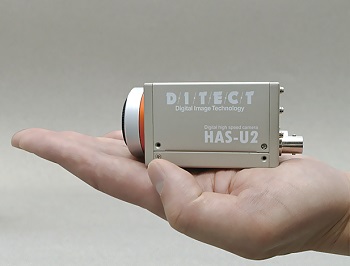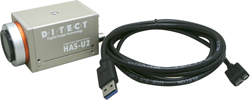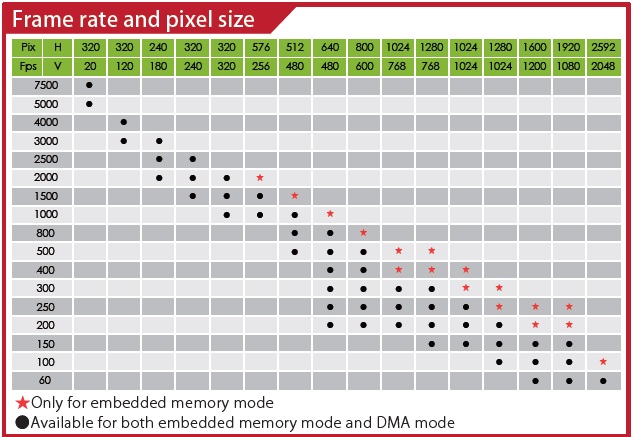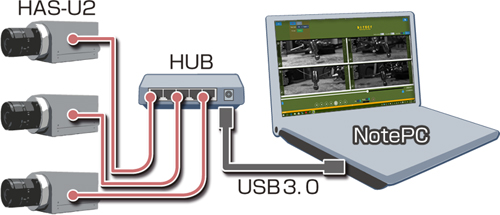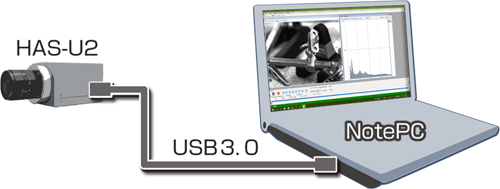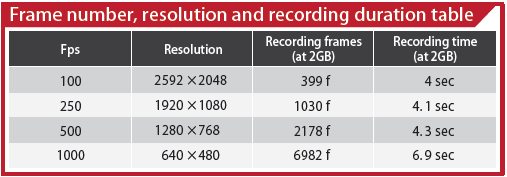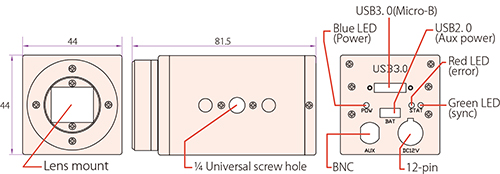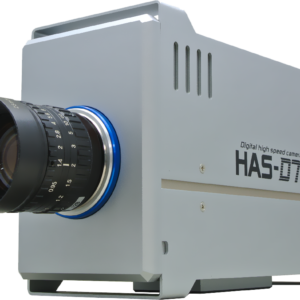Description
Technical Specifications and Features
The HAS-U2 high-speed camera is equipped with advanced specifications that cater to a wide range of applications in research, industry, and entertainment. At the heart of the unit lies a 1-inch CMOS sensor, allowing for high-quality imaging and efficient light capture. This sensor contributes to an effective resolution of 2592×2048 pixels, ensuring that images are sharp and precise, which is critical for high-speed photography.
A standout feature of the HAS-U2 is its remarkable frame rate capabilities. The camera can achieve 100 frames per second (fps) at full resolution, making it suitable for capturing fast-moving subjects. For scenarios where lower resolutions are sufficient, the device can increase its performance dramatically, offering frame rates of 1,000 fps at VGA resolution and an astonishing 7,500 fps when the pixel area is limited. This flexibility in frame rates enables users to tailor the camera’s performance to their specific needs.
Additionally, the HAS-U2 incorporates unique shooting modes such as embedded memory mode and direct memory access mode utilizing USB3.0 technology. Embedded memory mode allows users to capture high-speed events without the immediate need for external storage, while direct memory access mode provides fast data transfer capabilities, enhancing the overall functionality and efficiency of the camera. The compatibility with 64-bit operating systems ensures that users can seamlessly integrate the camera into their existing workflows, facilitating improved data processing and management.
Moreover, the USB3.0 interface plays a crucial role in determining the maximum data transfer speeds, which are vital for achieving optimal frame rates and resolutions. The camera is designed with practical physical specifications, making it relatively compact and lightweight, thus enhancing its portability. The power requirements are also optimized, allowing users to utilize this high-speed camera across various environments without the need for extensive setups.
Applications of the HAS-U2 in Research and Industry
The HAS-U2 high-speed camera has garnered attention across several fields, demonstrating its versatility and effectiveness in capturing dynamic events that are otherwise imperceptible to the human eye. Researchers in behavioral science utilize this camera to analyze intricate movements and interactions in both human and animal subjects. For example, by employing the HAS-U2, scientists can study the rapid movements of animals during mating rituals or aggressive encounters, allowing for a deeper understanding of behavioral patterns and social dynamics.
In the realm of fluid dynamics, the capabilities of the HAS-U2 are employed to visualize the complexities of fluid interactions. This includes studying turbulent flows and understanding phenomena such as cavitation in pumps or the behavior of droplets in various conditions. Its high frame rates enable researchers to observe the transient stages of fluid motion that are critical for modeling and simulation purposes.
Sports science also benefits significantly from the deployment of the HAS-U2 high-speed camera. It facilitates biomechanical analysis by capturing athletes’ movements during training and competitions, providing data that can improve performance, reduce injury risks, and enhance coaching strategies. By capturing frames at high speeds, researchers can analyze split-second reactions and refine techniques based on precise feedback.
Moreover, industrial applications involve using the HAS-U2 for machine vision, crash testing, and microscopy. Synchronized configurations, where multiple cameras are connected to a single PC, elevate the data collection process. This setup allows engineers to capture complex interactions or failures during crash tests, providing insights that guide safety improvements in vehicle design. In microscopy, high-speed imaging enables researchers to observe fast biological processes, yielding a wealth of information about cellular behaviors in real time.
The adaptability of the HAS-U2 across these diverse applications illustrates its significance in enhancing our understanding of rapid phenomena, making it an invaluable tool in both research and industry settings.

